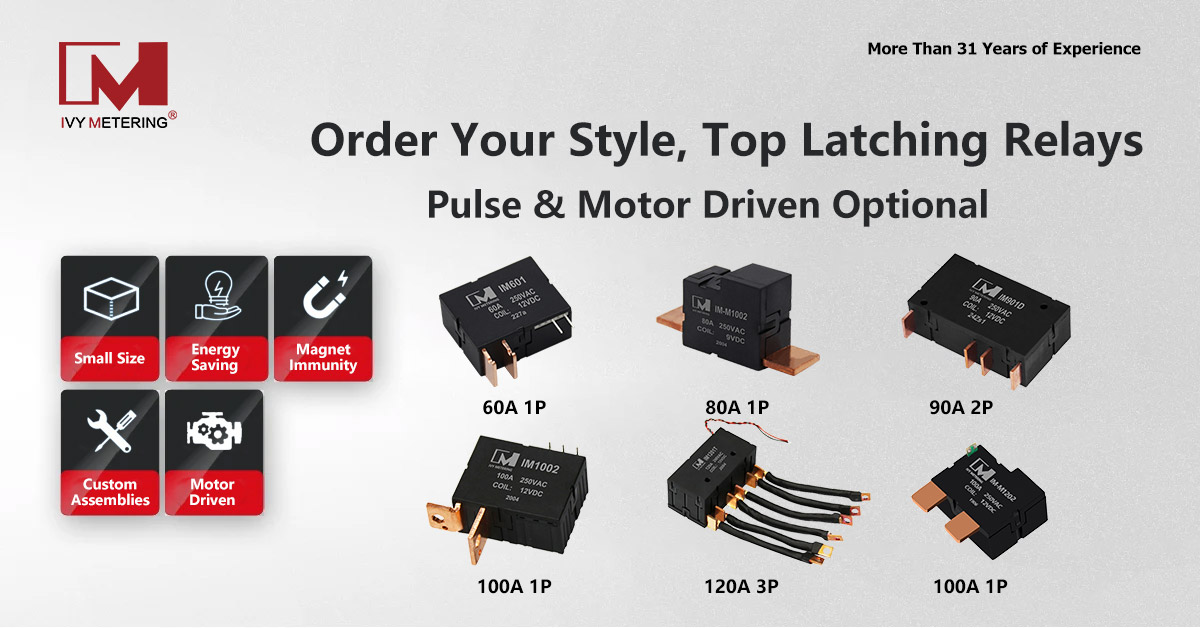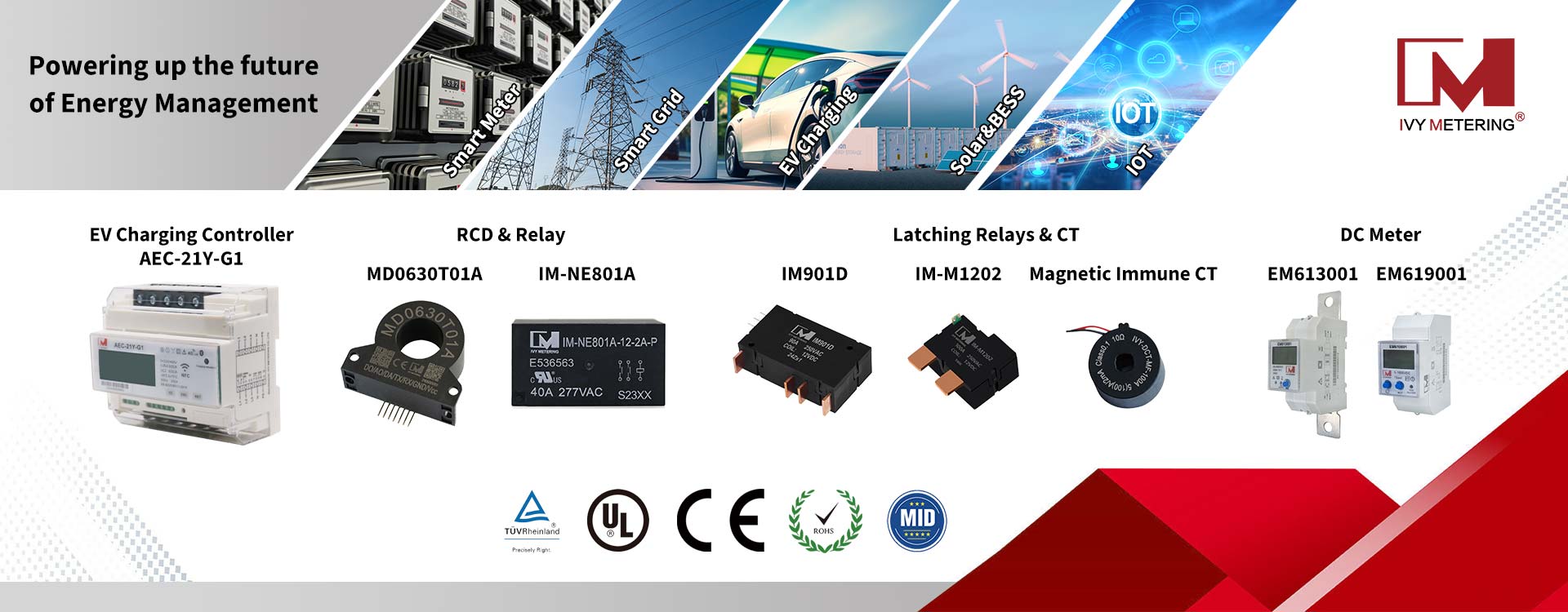How to choose a suitable power latching relay?
The application scenarios of relays are systematically classified so that everyone can clearly choose the type of relay. This is something we need to consider when choosing to use a latching relay or a power relay.

First, Does your circuit need to be frequently switched on and off?
If the circuit's closed and open states are not switched frequently, such as in scenarios such as electric meters, electric vehicle charging piles, and street lighting control, there is no need for frequent switching. Then the latching relay is a suitable choice, thanks to the unique bistable characteristics of the holding relay. A given short pulse can realize the circuit switch and maintain it in the disconnected or connected state. Taking a single coil as an example, if you want to change the current state, just give a forward (reverse) pulse. During the subsequent period, the relay will maintain low power consumption and the coil inside the relay will not heat up, which protects the service life of the relay.
If the circuit needs to be switched on and off in a short time, such as AC/DC voltage regulators, UPS power supplies, lawn mowers, bumper cars in amusement parks, washing machines, etc., it is better to use power relays in these scenarios, because the coil drive end of the power relay needs to be powered on all the time to achieve timely and effective switching. If a holding relay is used here, its latching characteristics cannot be exerted. In addition, it should be noted that the power relay should be of better quality. Whether the relay can be switched on and off normally directly affects the life of the entire electrical equipment. Many bad merchants in the market cut corners on the contacts of the relay, and the contact material is important for the normal and frequent switching of the protection circuit. The ability to not arc and not stick is a direct reflection of the quality of the contact.
Second, Does your device need to be in a mobile state?
When smart electricity meters, car charging piles, various medical instruments and other equipment are working normally, they are in a relatively stable state. At this time, it is better to choose a magnetic latching relay, which makes full use of the advantages of low power consumption and high life of the magnetic latching relay. However, if it is something like drones, bumper cars, electric cars, etc., because these devices are often in an unstable state of movement, the relay needs to have better impact resistance. At this time, it is better to use a high-power relay or a motor-held relay. The high-power relay can maintain a relatively good on-off state under a continuous driving voltage. The motor-latching relay has a motor-driven gear transmission structure inside, which has a better bite ability, making the contact points more closely contacted, and basically will not be affected by external collisions and cause the contact state to change.
Third, does your device have strict requirements for the magnetic field changes in the surrounding environment?
For example, some smart meters have increased the ability to prevent electricity from being stolen. The effective measurement of the meter is inseparable from the normal on-off of the relay. If the external constant magnetic field interferes with the meter, the consequence is that the relay cannot be normally on and off, and the electricity will be directly stolen by criminals. In this case, if the magnetic latching relay is not added with a corresponding iron shell, it may not work smoothly, and the old mechanical latching relay with a complex structure inside is also helpless. The motor holding relay has a built-in 500mT constant magnetic field resistance, which is applicable in this case.
Fourth, does your device have a good space to accommodate a certain type of relay?
There are many types of relays, and their sizes are also different, ranging from as big as a brick to as small as a fingernail. Generally, high-power electromagnetic relays under the same load are larger than magnetic latching relays, magnetic latching relays are larger than motor latching relays, and motor latching relays are larger than small and medium-power relays. This requires you to consider the size of the relay when choosing a relay.
As a "good horse" among many brand companies, IVY Metering has been well received in the smart meter market at home and abroad with its more than 20 years of experience in the relay industry, self-built supply chain, highly automated production lines and strict production standards. I believe that IVY Metering's magnetic latching relays will continue to shine in the field of smart meters, take energy management as the company's mission, continuously refine technology, pursue craftsmanship, and make better and more energy-saving smart meter latching relays! At the same time, motor-type latching relays, due to their gear structure and inherent anti-strong magnetic properties, are also being familiarized and used by more and more manufacturers. IVY Metering relays are the right answer to smart meters, choose one that belongs to you! For more information, please contact us!
Regarding the selection of relays, different relays can be selected according to their functional differences. Welcome to WhatsApp or email us at any time
#relay #magnetic latching relay #power relay #electromagnetic relay #motor latching relay #bistable relay












